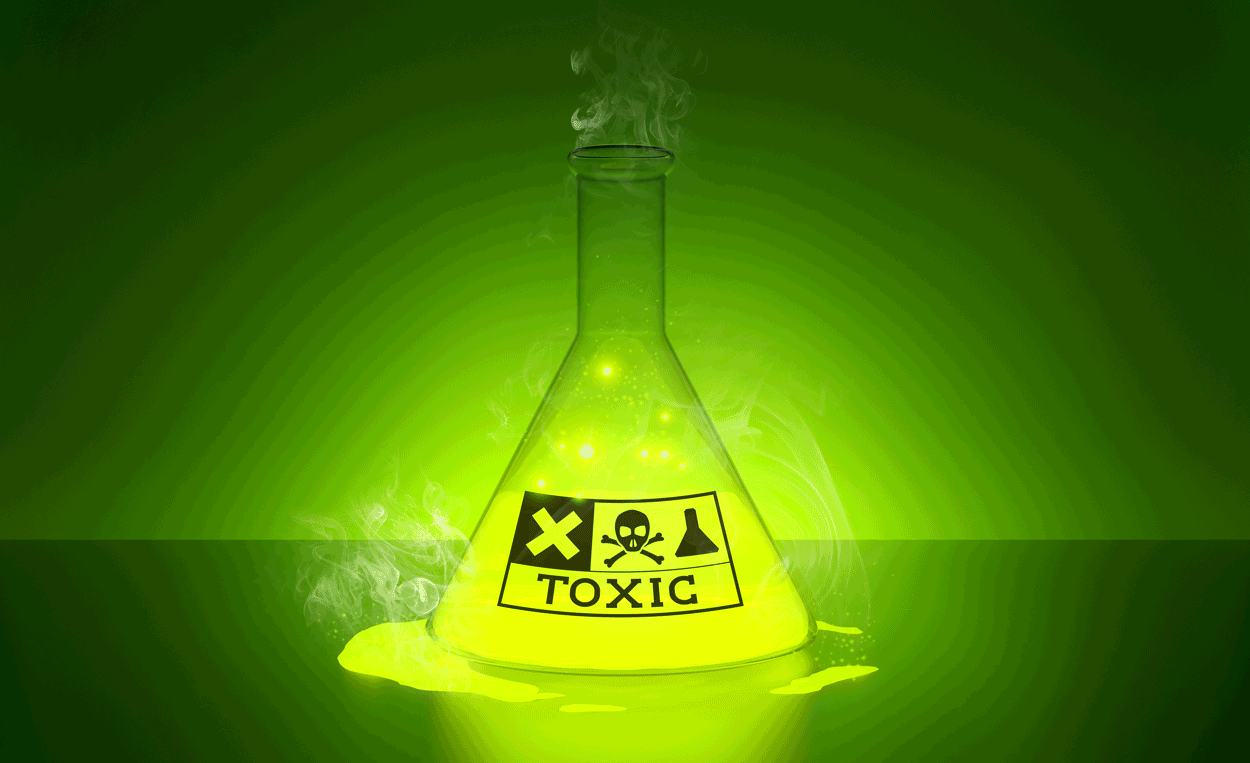The Occupational Safety and Health Administration (OSHA) has proposed revisions to its Powered Industrial Trucks Standard – more often referred to as the “Forklift Standard” since those are the most common types (29 CFR section 1910.178 (general industry) and 1926.602 (construction)). OSHA first adopted the standard in 1971, and most recently revised it in 2017. However, as discussed below, OSHA has never updated the Standard’s principal technical standards during more than half a century. The remainder of this note summarizes the existing requirements, and identifies proposed revisions.
Audit, Compliance and Risk Blog
Jon Elliott
Recent Posts
After more than 50 years, OSHA proposes newer and more flexible standards for forklifts
Posted by Jon Elliott on Mon, Feb 28, 2022
Tags: Health & Safety, OSHA
The US Environmental Protection Agency (EPA) continues to expand and refine environmental compliance requirements, including those related to greenhouse gas (GHG) emissions. In particular, facilities and organizations subject to EPA's mandatory GHG emission reporting rules should be preparing to submit reports covering calendar year 2021. The remainder of this note summarizes these requirements.
Read More
Tags: EPA, Greenhouse Gas, ghg, Environment
Latest National Toxicology Program Report on Carcinogens adds 8 substances
Posted by Jon Elliott on Mon, Feb 14, 2022
The US National Toxicology Program (NTP) has issued its 15th Report on Carcinogens (RoC), adding eight new substances; NTP now identifies 256 chemical, physical, and biological agents; mixtures; and exposure circumstances as “known or reasonably anticipated to cause cancer in humans.” NTP operates within the National Institute of Environmental Health Sciences (NIEHS), which is a unit of the National Institutes of Health (NIH). It was established in 1978 to:
Read More
Tags: Health & Safety, NTP, toxicology
California continues temporary requirements for COVID vaccination and testing
Posted by Jon Elliott on Mon, Feb 07, 2022
Although the Occupational Safety and Health Administration (OSHA) has been forced by court action to convert its would-be “emergency temporary standard (ETS)” under which large employers would have been required to protect unvaccinated employees from COVID-19 infections into a proposal (I wrote about the initial ETS HERE), some states can and are moving ahead with similar requirements. Notably, California’s Division of Occupational Safety and Health (DOSH, but universally called Cal/OSHA) recently revised and renewed its own COVID-19 ETSs. The remainder of this note summarizes these standards, which cover five sections of Title 8 of the California Code of Regulations (CCR):
Read MoreTags: Health & Safety, OSHA, Safety and Health at Work, Covid-19, workplace safety, California, Vaccination, Healthcare
The US federal Occupational Safety and Health Administration (OSHA) administers “Voluntary Protection Programs” (VPPs) to encourage employers to establish and implement voluntary worker Safety and Health Programs that exceed minimal efforts to comply with applicable OSHA standards. As its name states, participation in any VPP is voluntary. They are designed to encourage employer/employee/OSHA cooperation, and to reward such cooperation by granting employers increased flexibility and reduced likelihood of inspection. VPP sets performance-based criteria for a managed safety and health system, invites sites (and discrete mobile workforces) to apply, and then assesses applicants against these criteria. OSHA provides for full participation (the “Star” program) for sites/workforces that meet all criteria, conditional participation where an employer claims to meet some VPP criteria by non-standard methods (the “Demonstration” program), and qualified participation where the employer fully meets some VPP criteria and has definite plans to meet others (the “Merit” program).
The remainder of this note summarizes VPP criteria and provides additional information about the status of the programs.
Read More
Tags: Health & Safety, OSHA, Safety and Health at Work, workplace safety, VPP
US tightens federal standards for greenhouse gas emissions from automobiles
Posted by Jon Elliott on Mon, Jan 24, 2022
During the last decade, federal state authorities have sparred with themselves and with states over regulatory standards limiting greenhouse gas (GHG) emissions from automobiles. Nationally, the US Environmental Protection Agency (EPA) and the National Highway Traffic Safety Administration (NHTSA) share authority over fleetwide and individual vehicle standards. EPA applies authority under the Clean Air act (CAA) and NHTSA applies authority under the Energy Policy and Conservation Act of 1975 (EPCA) including Corporate Average Fuel Economy (CAFÉ) standards. In addition, the state of California has unique CAA authority over vehicle emission; in recent years, Democratic presidential administrations generally produce federal-state cooperation, whereas Republican presidential administrations produce conflicts. (I’ve written about these issues several times, most recently HERE). True to this pattern, on December 21, 2021 EPA issued tighter vehicle emission rules covering Model Years (MY) 2023 through 2026, and NHTSA rescinded its (Trump era) rule preempting California’s stricter GHG emission standards. The remainder of this note discusses these new rules, within the context of ongoing rulemakings.
Read MoreTags: Environmental, Greenhouse Gas, ghg, CO2 Emissions
After more than 30 years EPA defines a new Hazardous Air Pollutant
Posted by Jon Elliott on Mon, Jan 17, 2022
Since 1990, the Clean Air Act (CAA) has defined a list of Hazardous Air Pollutants (HAPs), requiring the U.S. Environmental Protection Agency (EPA) to set emissions standards for many sources of these pollutants. HAPs include heavy metals, organics, and other airborne pollutants that are not otherwise regulated as “criteria” air pollutants (such as carbon monoxide, particulate matter, and ground level ozone). The 1990 CAA Amendments included a list of 189 HAPs (later corrected to 188), and empowered EPA to modify the list. In the intervening decades, EPA conducted rulemakings and deleted four initially-listed HAPs, but until 2022 had never added a new HAP. However, EPA has now added 1-bromopropane (1-BP) as a new HAP, effective February 4, 2022.
Read More
Tags: HAPs, Clean Air Act
“Bad Faith” Termination Yields Bad Consequences for the Employer
Posted by Jon Elliott on Mon, Jan 10, 2022
In October, the Ontario Superior Court of Justice granted summary judgment to an ex-employee suing her ex-employer for wrongful dismissal, aggravated damages for mental distress and punitive damages. In this case, Humphrey v. Menē, Inc., the Court found that the employer’s “bad faith” termination had invalidated the termination clause in the parties’ employment contract, and then rejected the employer’s change in argument from a termination for cause to termination without cause, and awarded 11 months’ wages at the salary of $90,000, aggravated damages of $50,000 due to mental distress, and $25,000 in punitive damages for 2.7 years of service.
Remembering that summary judgment is only available when the court decides there’s no genuine issue of fact that would justify a trial, this represents an extreme outcome. However, it still should remind employers to tread carefully when moving to terminate an employee.
Read More
Tags: Labour & Employment, Canada, Ontario Superior Court of Justice
EPA and Corps of Engineers propose another re-definition of “Waters of the United States”
Posted by Jon Elliott on Mon, Jan 03, 2022
The Clean Water Act (CWA) empowers federal agencies to regulate activities that may affect “waters of the United States”—sometimes called “navigable waters.” These activities include water quality planning and discharge regulation by the US Environmental Protection Agency (EPA) and delegated states, and regulation of projects that may lead to “dredge and fill” of waters, requiring permits from the US Army Corps of Engineers (Corps).
However, CWA does not define this critical term. For many years, agencies used regulatory definitions jointly developed by EPA and the Corps in rules that date primarily from 1986, which included ambiguities that increased agency discretion but also frustrated landowner aspirations in some cases. However, beginning in 2001 a series of decisions by the US Supreme Court frayed the expansive edges of the regulators’ interpretations. First, in Solid Waste Agency of Northern Cook County v. U.S. Army Corps of Engineers (SWANCC), the Court ruled that the Corps lacks jurisdiction over “isolated” waters and wetlands that are not “adjacent” to navigable waters—such as “prairie potholes,” mudflats, and freshwater seasonal ponds. Then, in Rapanos v. United States, the Court ruled in 2006 that the Corps can exert jurisdiction over non-adjacent wetlands where there is a “significant nexus” between the wetlands and navigable waters (in addition, the wetlands must be at least “relatively permanent”).
Read MoreTags: EPA, clean water, Environment, PCBs, Wetlands, waters, water
The US federal Occupational Safety and Health Administration (OSHA) has added a portal to its webpage compiling “Holiday Worker Safety” guidance. These cover obvious retail and delivery workplaces that are likely to be especially busy during the holidays, as well as links to generalized resources and guidance intended to be useful to all workplaces. The remainder of this note identifies and summarizes OSHA’s pointers.
Read More
Tags: Health & Safety, OSHA, Safety and Health at Work, workplace safety










